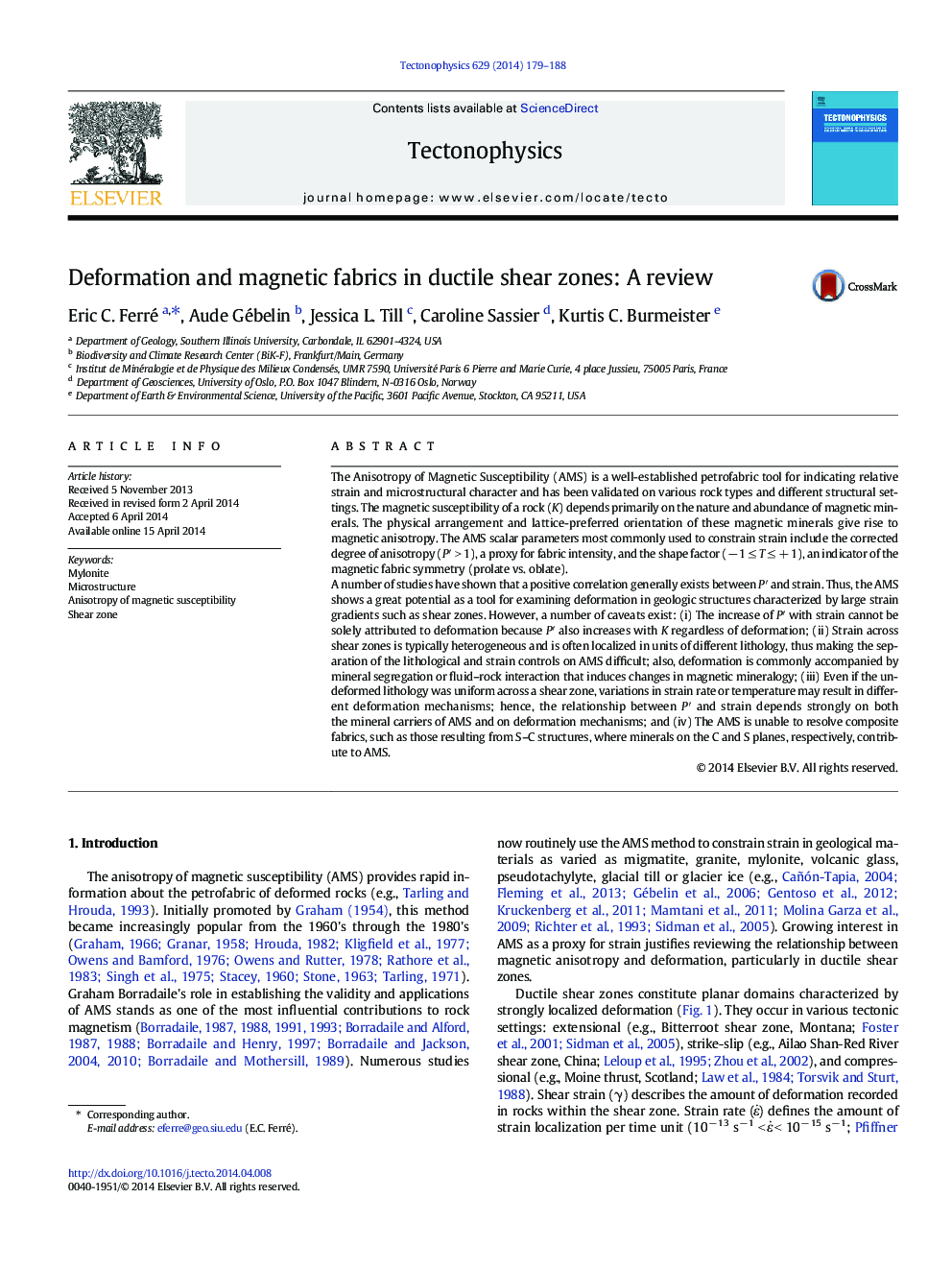| Article ID | Journal | Published Year | Pages | File Type |
|---|---|---|---|---|
| 4691908 | Tectonophysics | 2014 | 10 Pages |
•AMS is a well-established tool for constraining strain in ductile shear zones.•A positive correlation generally exists between P' and strain in ductile shear zones.•The increase of P' with strain cannot be solely attributed to deformation.•Variations in strain rate, temperature or deformation mechanisms affect the AMS.•The obliquity between high-field and low-field AMS is a shear sense indicator.
The Anisotropy of Magnetic Susceptibility (AMS) is a well-established petrofabric tool for indicating relative strain and microstructural character and has been validated on various rock types and different structural settings. The magnetic susceptibility of a rock (K) depends primarily on the nature and abundance of magnetic minerals. The physical arrangement and lattice-preferred orientation of these magnetic minerals give rise to magnetic anisotropy. The AMS scalar parameters most commonly used to constrain strain include the corrected degree of anisotropy (P′ > 1), a proxy for fabric intensity, and the shape factor (− 1 ≤ T ≤ + 1), an indicator of the magnetic fabric symmetry (prolate vs. oblate).A number of studies have shown that a positive correlation generally exists between P′ and strain. Thus, the AMS shows a great potential as a tool for examining deformation in geologic structures characterized by large strain gradients such as shear zones. However, a number of caveats exist: (i) The increase of P′ with strain cannot be solely attributed to deformation because P′ also increases with K regardless of deformation; (ii) Strain across shear zones is typically heterogeneous and is often localized in units of different lithology, thus making the separation of the lithological and strain controls on AMS difficult; also, deformation is commonly accompanied by mineral segregation or fluid–rock interaction that induces changes in magnetic mineralogy; (iii) Even if the undeformed lithology was uniform across a shear zone, variations in strain rate or temperature may result in different deformation mechanisms; hence, the relationship between P′ and strain depends strongly on both the mineral carriers of AMS and on deformation mechanisms; and (iv) The AMS is unable to resolve composite fabrics, such as those resulting from S–C structures, where minerals on the C and S planes, respectively, contribute to AMS.
